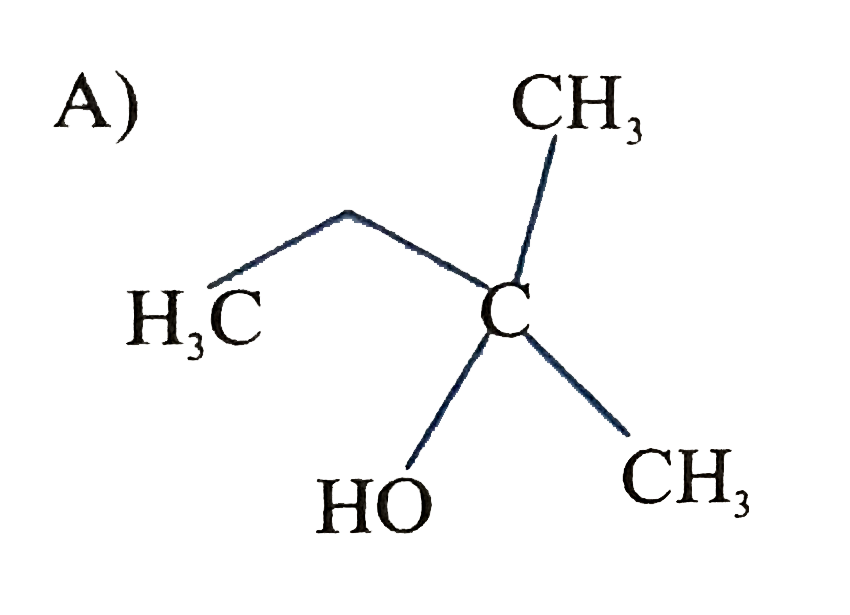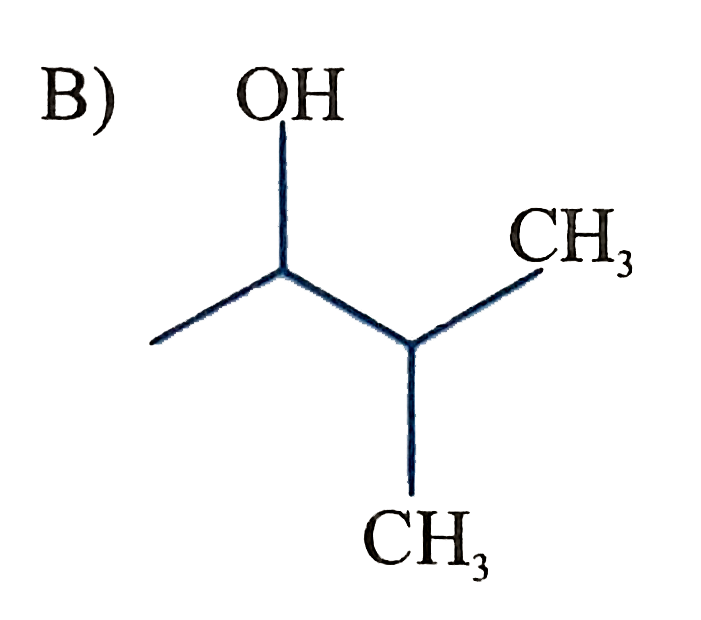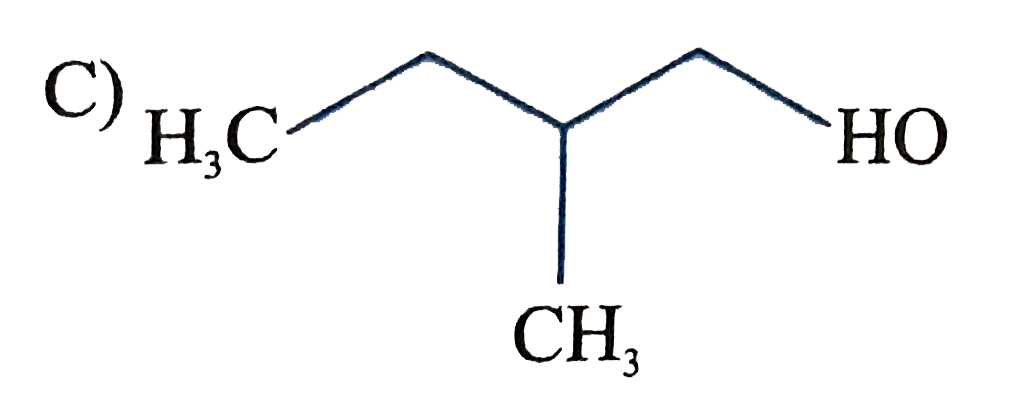The trans-alkenes are formed by the reduction of alkynes with
Sn-HCI
The correct Answer is:C
Topper's Solved these Questions
- BOOK - MODERN PUBLICATIONCHAPTER - HYDROCARBONSEXERCISE - COMPETITION FILE (OBJECTIVE TYPE QUESTIONS) (MULTIPLE CHOICE QUESTIONS from competitive examinations (JEE (Advance) for IIT Entrance))4videos
HYDROCARBONS
- BOOK - MODERN PUBLICATIONCHAPTER - HYDROCARBONSEXERCISE - COMPETITION FILE (OBJECTIVE TYPE QUESTIONS) (MULTIPLE CHOICE QUESTIONS with more than one correct answers)13videos
HYDROCARBONS
- BOOK - MODERN PUBLICATIONCHAPTER - HYDROCARBONSEXERCISE - COMPETITION FILE (OBJECTIVE TYPE QUESTIONS) (MULTIPLE CHOICE QUESTIONS from competitive examinations (AIPMT, NEET & Other State Boards Medical Entrance))50videos
HYDROCARBONS
- BOOK - MODERN PUBLICATIONCHAPTER - HALOALKANES AND HALOARENESEXERCISE - UNIT PRACTICE TEST12videos
HALOALKANES AND HALOARENES
- BOOK - MODERN PUBLICATIONCHAPTER - HYDROGENEXERCISE - UNIT PRACTICE TEST (for Board Examination)9videos
HYDROGEN
Similar Questions
Alkynes on reduction with sodium in liquid ammonia form trans alkenes. Will the butene thus formed on reduction of but-2-yne show the geometrical isomerism?
View SolutionAlkynes on reduction with sodium in liquid ammonia form trans alkenes. Will the butene thus formed on reduction of 2-butyne show the geometrical isomerism ?
View Solution
Knowledge Check
- Question 1 - Select One
The trans-alkenes are formed by the reduction of alkynes with
AH2−Pd/C,BaSO4BNaBH4CNa/liq.NH3DSn- HCl - Question 2 - Select One
Hydrogenation of alkenes and alkynes takes place in presence of certain catalysts. In sabatier-Senderen's reaction, the addition of hydrongen taken place in presence of nickel catalyst. Controlled hydrogenation of alkyne in presence of Lindlar's catalyst gives cis-alkene. Non terminal alkynes are reduced by Na or Li metal dissolved in liquid NH3. In this reaction trans alkenes are formed.
Q. The product of the following reaction is
 A
A B
B C
C D
D
- Question 3 - Select One
Reduction of an alkyne to the double bond stage can yield a cis alkene or trans alkene (except in cases where triple bond is at the end of the chain ) Reduction of alknes with sodium or lithium in liquid NH3 yields predominantly trans alkene.

Hydrogenation of alkynes with Lindlar's catalyst or a nickel boride called P2 catalyst yeilds is alkene (as high as 98%)

If Pd/C/H2 is used in the absence of a catalyst poison, two equivlanet of H2 are added forming alkanes.
Reduction of alkynes to trans alkene by Li/NH3 is carried out in the presence of dry ice. This is because ofAradical anion is formed at the temperature of dry iceBintermediate if formed with dry iceCNH3 remains inliquid state at the temperature of dry iceDLi remains in liquid state at the temperature of dry ice
Alkynes on reduction with sodium in liquid ammonia form trans alkenes. Will the butene thus formed on reduction of 2-butyne show the geometrical isomerism ?
View SolutionReduction of an alkyne to the double bond stage can yield a cis alkene or trans alkene (except in cases where triple bond is at the end of the chain ) Reduction of alknes with sodium or lithium in liquid NH3 yields predominantly trans alkene.

Hydrogenation of alkynes with Lindlar's catalyst or a nickel boride called P2 catalyst yeilds is alkene (as high as 98%)

If Pd/C/H2 is used in the absence of a catalyst poison, two equivlanet of H2 are added forming alkanes.

Select the correct statement(s)View SolutionReduction of an alkyne to the double bond stage can yield a cis alkene or trans alkene (except in cases where triple bond is at the end of the chain ) Reduction of alknes with sodium or lithium in liquid NH3 yields predominantly trans alkene.

Hydrogenation of alkynes with Lindlar's catalyst or a nickel boride called P2 catalyst yeilds is alkene (as high as 98%)

If Pd/C/H2 is used in the absence of a catalyst poison, two equivlanet of H2 are added forming alkanes.
Lindlar's catalyst can be prepared in precipitating palladium calcium carbonate and treating it with lead acetate or quinoline. This treatement isView SolutionReduction of an alkyne to the double bond stage can yield a cis alkene or trans alkene (except in cases where triple bond is at the end of the chain ) Reduction of alknes with sodium or lithium in liquid NH3 yields predominantly trans alkene.

Hydrogenation of alkynes with Lindlar's catalyst or a nickel boride called P2 catalyst yeilds is alkene (as high as 98%)

If Pd/C/H2 is used in the absence of a catalyst poison, two equivlanet of H2 are added forming alkanes.
Shown below is the first step in hte synthesis of hte important perfume constituent, cis-Jasmone which reagents you choose to carry out this last step?
 View Solution
View SolutionHydrogenation of alkenes and alkynes takes place in presence of certain catalysts. In Sabatier Senderen's reaction, the addition of hydrogen takes place I presence of Raney nickel catalyst. Platininm and palladium can also be used as catalyst and used in finley divided state. Experimentally, it is observed that less crowded alkenes adsorb H2 with faster rate. Controlled hydrogenation of alkyne H2 with faster rate. Controlled hydrogenation of alkyne in presence of Lindlar's catalyst yields cis product i.e., 'cis' alkene. Thus, in presence of Lindlar's catalyst 'syn' addition takes place. The relative rate of hydrogenation follows the order:

Non-terminal alkynes are reduced in presence of Na or Li metal dissolved in liquid ammonia. In this reaction, anti-addition of hydrogen results into the trans-product.
Answer the following questions:
The relative rate of catalytic hydrogenation of following alkenes is:
 View Solution
View Solution


